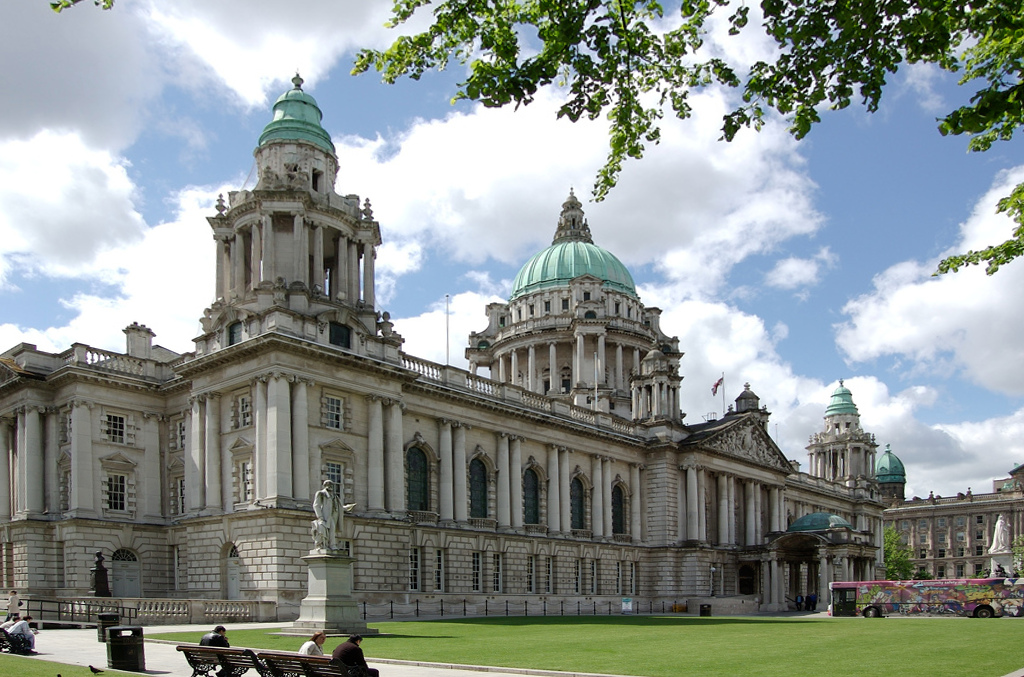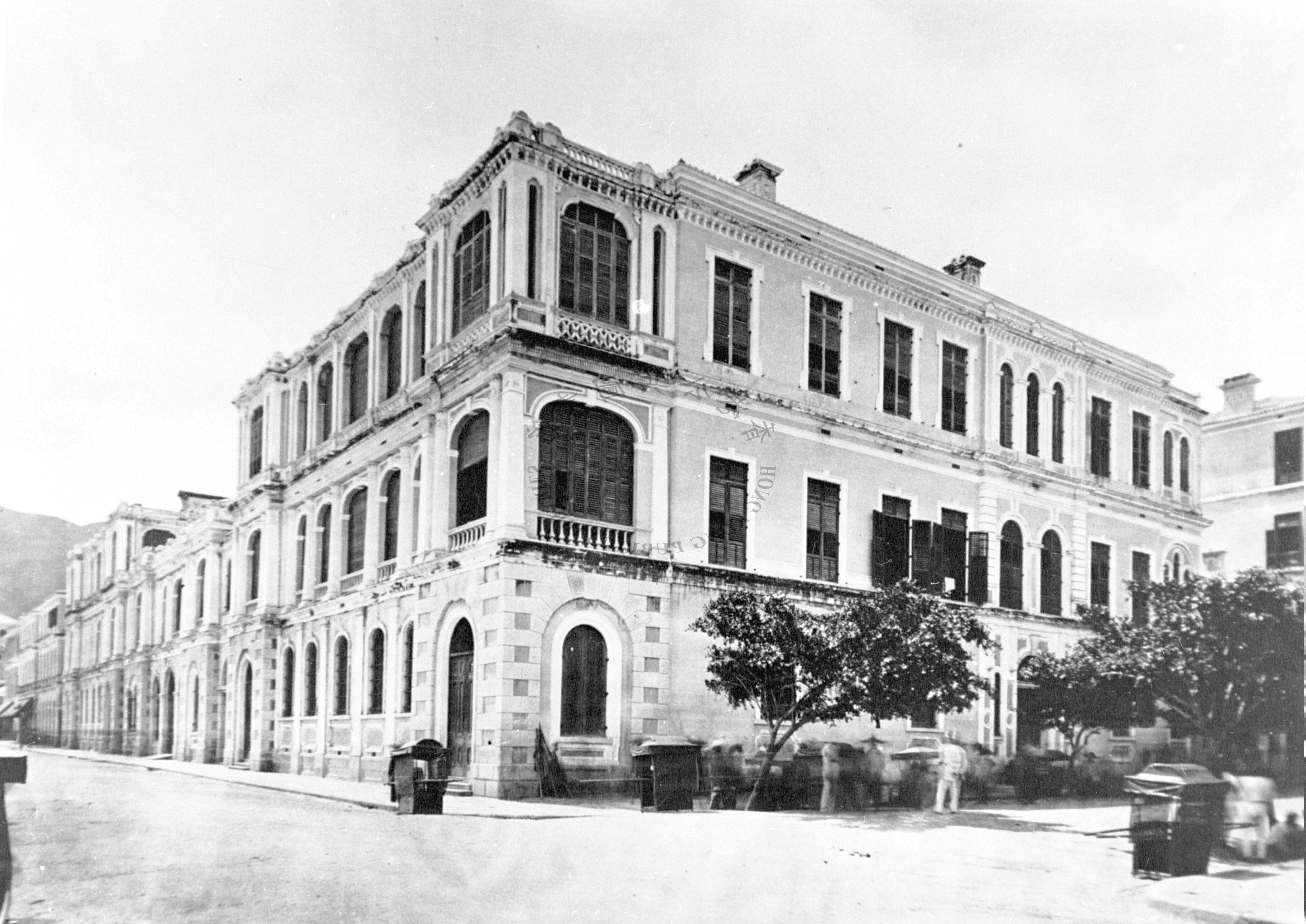|
Clock Tower, Kowloon
The Clock Tower is a landmark in Hong Kong. It is located on the southern shore of Tsim Sha Tsui, Kowloon. It is the only remnant of the original site of the former Kowloon station on the Kowloon–Canton Railway. Officially named Former Kowloon-Canton Railway Clock Tower (), it is usually referred to as the Tsim Sha Tsui Clock Tower () for its location. Built out of red bricks and granite, the Clock Tower peaks at 44 metres, and is topped by a 7-metre lightning rod. The top of the tower can be reached by a wooden staircase located within. The interior of Clock Tower had previously been open for the visit but is currently closed for maintenance. The clock tower is located near Victoria Harbour and near the western end of Salisbury Road. Another landmark, the Tsim Sha Tsui Ferry Pier, is located nearby. The tower has been listed as a declared monument in Hong Kong since 1990. History The plan of Kowloon-Canton Railway was realised in 1904 with its terminus in Tsim Sha Tsui. ... [...More Info...] [...Related Items...] OR: [Wikipedia] [Google] [Baidu] |
Edwardian Architecture
Edwardian architecture usually refers to a Baroque Revival architecture, Neo-Baroque architectural style that was popular for public buildings in the British Empire during the Edwardian era (1901–1910). Architecture up to 1914 is commonly included in this style. It can also be used to mean various styles in middle-class housing, including relaxed versions of Arts and Crafts architecture. Description Edwardian architecture is generally less ornate than high or late Victorian architecture, apart from a subset – used for major buildings – known as Edwardian Baroque architecture. The Victorian Society campaigns to preserve architecture built between 1837 and 1914, and so includes Edwardian as well as Victorian architecture within its remit. Characteristics The characteristic features of the Edwardian Baroque style were drawn from two main sources: the architecture of France during the 18th century and that of Sir Christopher Wren in England during the 17th—part of the E ... [...More Info...] [...Related Items...] OR: [Wikipedia] [Google] [Baidu] |
British Malaya
The term "British Malaya" (; ) loosely describes a set of states on the Malay Peninsula and the island of Singapore that were brought under British Empire, British hegemony or control between the late 18th and the mid-20th century. Unlike the term "British Raj, British India", which excludes the Indian princely states, British Malaya is often used to refer to the Federated Malay States, Federated and the Unfederated Malay States, which were British protectorates with their own local rulers, as well as the Straits Settlements, which were under the sovereignty and direct rule of the British Crown, after a period of control by the East India Company. Before the formation of the Malayan Union in 1946, the territories were not placed under a single unified administration, with the exception of the immediate post-war period when a British military officer became the temporary administrator of Malaya. Instead, British Malaya comprised the Straits Settlements, the Federated Malay State ... [...More Info...] [...Related Items...] OR: [Wikipedia] [Google] [Baidu] |
Hong Kong Cultural Centre
The Hong Kong Cultural Centre (HKCC, ) is a public multipurpose performance facility in Tsim Sha Tsui, Hong Kong. Located at Salisbury Road, it was built by the former Urban Council and, since 2000, has been administered by the Leisure and Cultural Services Department of the Hong Kong Government. A wide variety of cultural performances are held here. Location The centre is located on the southwestern tip of Tsim Sha Tsui, on the former location of the Kowloon station of the Kowloon–Canton Railway. Adjacent to the centre on the west is the Tsim Sha Tsui Ferry Pier of the Star Ferry, while to the east are the Hong Kong Space Museum and Hong Kong Museum of Art. The historic Clock Tower stands between the centre and the pier. History As early as 1970, the Urban Council pressed for construction of a new cultural venue in Kowloon of the same modern standard as the City Hall in Central. The cultural centre project was formally announced in 1974 to be planned on the site ... [...More Info...] [...Related Items...] OR: [Wikipedia] [Google] [Baidu] |
Hong Kong Museum Of Art
The Hong Kong Museum of Art (HKMoA) is the first and one of the main art museums of Hong Kong, located in located in Tsim Sha Tsui, Kowloon, near the Victoria Harbour waterfront, providing a scenic view of Hong Kong’s skyline. It is a public museum managed by the Leisure and Cultural Services Department of the Hong Kong Government. HKMoA has an art collection of over 17,000 items, dedicated to preserving and showcasing Chinese and international art. Admission is free for permanent exhibitions. Its rival is the non-government-managed Hong Kong Arts Centre. These two museums are considered to be the top two art museums in Hong Kong that dictate the discourse of art in Hong Kong. It has an extended branch, the Flagstaff House Museum of Tea Ware, at the Hong Kong Park in Central. History The museum was established as the City Hall Museum and Art Gallery in the City Hall in Central by the Urban Council on 2 March 1962. This was split into the Hong Kong Museum of History ... [...More Info...] [...Related Items...] OR: [Wikipedia] [Google] [Baidu] |
Hong Kong Space Museum
The Hong Kong Space Museum is a public astronomy and space science museum located in Tsim Sha Tsui, Hong Kong. Opened on 8 October 1980, it is managed by the Leisure and Cultural Services Department of the Hong Kong Government. The building is notable for its hemispherical shape, which contains a planetarium, the only one in Hong Kong. The main facilities of the museum are located in a building next to the planetarium, showcasing information about the Solar System, cosmology, and spaceflight. Accessible from Salisbury Road, it is adjacent to the Hong Kong Cultural Centre, the Hong Kong Museum of Art, and the Tsim Sha Tsui Clock Tower. The Hong Kong Science Museum and the Hong Kong Museum of History are also located in Tsim Sha Tsui. History The idea of a planetarium was originally proposed in 1961 by the Urban Council. Ten years later, the Urban Services Department (USD) set up a working group to study overseas experience in establishing planetariums. The study was aimed at ... [...More Info...] [...Related Items...] OR: [Wikipedia] [Google] [Baidu] |
Hung Hom Bay
Hung Hom Bay was a bay in Victoria Harbour, between Tsim Sha Tsui and Hung Hom in the southeast of Kowloon Peninsula, Hong Kong. Since 1994, parts of the bay were reclaimed, and by 2019 it had been completely extinguished. All of present-day Tsim Sha Tsui East and Hung Hom station on the MTR as well as the Hung Hom Ferry Pier are on land reclaimed from the bay. The reclamation also buried several rocks, including Rumsey Rock. The bay once came inland as far as the present-day interchange of the West Kowloon Corridor and the Hung Hom Bypass. Education * Hong Kong Community College (Hung Hom Bay campus) * Hong Kong Polytechnic University *Ma Tau Chung Government Primary School (Hung Hom Bay) (馬頭涌官立小學(紅磡灣))https://www.chsc.hk/psp2020/sch_detail.php?lang_id=1&sch_id=102&return_page=sch_list.php?lang_id%3D1%26search_mode%3D%26frmMode%3Dpagebreak%26district_id%3D6%26sort_id%3D-1 and http://www.mtchhb.edu.hk Transportation * Hung Hom station * ... [...More Info...] [...Related Items...] OR: [Wikipedia] [Google] [Baidu] |
Hung Hom Station
Hung Hom () is a passenger railway List of MTR stations, station in Hung Hom, Kowloon, Hong Kong. It is an interchange station between the and the domestic services of the MTR network. This station serves the southern terminus of the East Rail Line in early morning before the first northbound train from Admiralty arrives. As the station is located next to the Cross-Harbour Tunnel's northern Portal (architecture), portal, it is also served by many cross-harbour bus routes. Opened as the new southern terminus of the Kowloon–Canton Railway (KCR) on 24 November 1975, the station was substantially expanded in the 1990s, at which time it was given its present name. The KCR British Section was also renamed East Rail line, KCR East Rail in order to differentiate it from the new West Rail line, KCR West Rail, which opened on 20 December 2003 and was extended to Hung Hom station on 16 August 2009. As part of the Sha Tin to Central Link project, the East Rail line was extended across ... [...More Info...] [...Related Items...] OR: [Wikipedia] [Google] [Baidu] |
World War II
World War II or the Second World War (1 September 1939 – 2 September 1945) was a World war, global conflict between two coalitions: the Allies of World War II, Allies and the Axis powers. World War II by country, Nearly all of the world's countries participated, with many nations mobilising all resources in pursuit of total war. Tanks in World War II, Tanks and Air warfare of World War II, aircraft played major roles, enabling the strategic bombing of cities and delivery of the Atomic bombings of Hiroshima and Nagasaki, first and only nuclear weapons ever used in war. World War II is the List of wars by death toll, deadliest conflict in history, causing World War II casualties, the death of 70 to 85 million people, more than half of whom were civilians. Millions died in genocides, including the Holocaust, and by massacres, starvation, and disease. After the Allied victory, Allied-occupied Germany, Germany, Allied-occupied Austria, Austria, Occupation of Japan, Japan, a ... [...More Info...] [...Related Items...] OR: [Wikipedia] [Google] [Baidu] |
Japanese Occupation Of Hong Kong
The Japanese occupation of Hong Kong began when the governor of Hong Kong, Mark Aitchison Young, surrendered the British Crown colony of British Hong Kong, Hong Kong to the Empire of Japan on 25 December 1941. His surrender occurred after Battle of Hong Kong, 18 days of fierce fighting against the Imperial Japanese Army, Japanese forces that invaded the territory.Snow, Philip (2004). ''The fall of Hong Kong: Britain, China and the Japanese occupation''. Yale University Press. .Mark, Chi-Kwan. (2004). ''Hong Kong and the Cold War: Anglo-American relations 1949–1957''. Oxford University Press. . p. 14. The occupation lasted for three years and eight months until Surrender of Japan, Japan surrendered at the end of the World War II, Second World War. The length of the period (, ) later became a metonym of the occupation. Background Imperial Japanese invasion of China During the Imperial Japanese military's Second Sino-Japanese war, full-scale invasion of China in 1937, Hong ... [...More Info...] [...Related Items...] OR: [Wikipedia] [Google] [Baidu] |
Pedder Street Clock Tower
Pedder Street is a major thoroughfare in the core of Hong Kong's Central, Hong Kong, Central District. It runs south–north from Queen's Road Central, continues through Des Voeux Road Central, and ends at its intersection with Connaught Road Central. History The street was named after William Pedder, Lieutenant William Pedder, First Lieutenant#Royal Navy, first lieutenant of the Nemesis (1839), ''Nemesis'', Britain's first ocean-going iron warship, and the first harbour master of Hong Kong. Pedder Street was established at the centre of Hong Kong's commerce in the History of Colonial Hong Kong (1800s - 1930s), early colonial days. The premises of Hong Kong's two most powerful trading ''Hong (business), hongs'' at the time, Dent & Co. and History of Jardine Matheson & Co., Jardine, Matheson & Co., were located on The Praya Central, Victoria's original waterfront, on the opposite sides of Pedder Street. Dent & Co., one of the key founding members of The Hongkong and Shanghai Ba ... [...More Info...] [...Related Items...] OR: [Wikipedia] [Google] [Baidu] |



